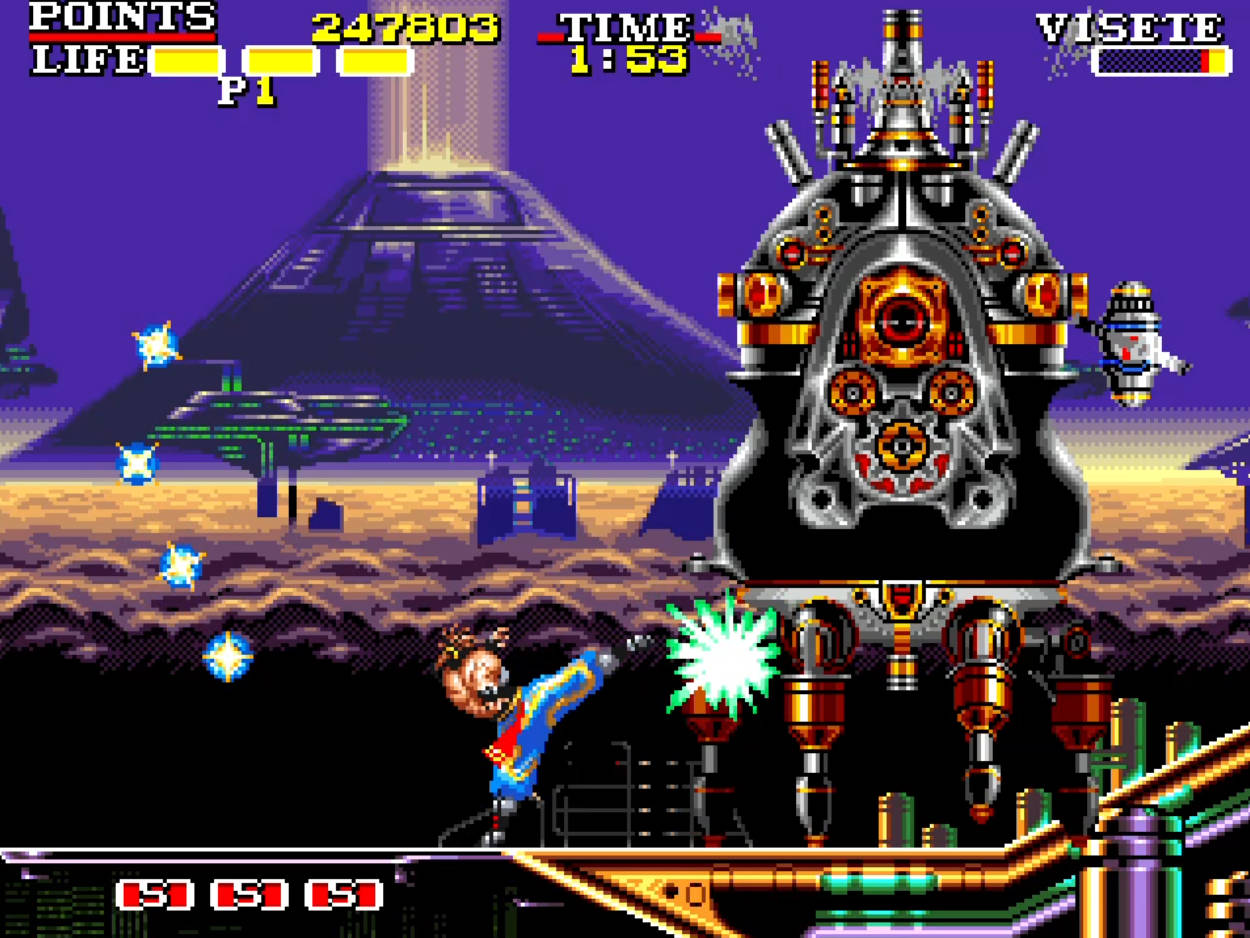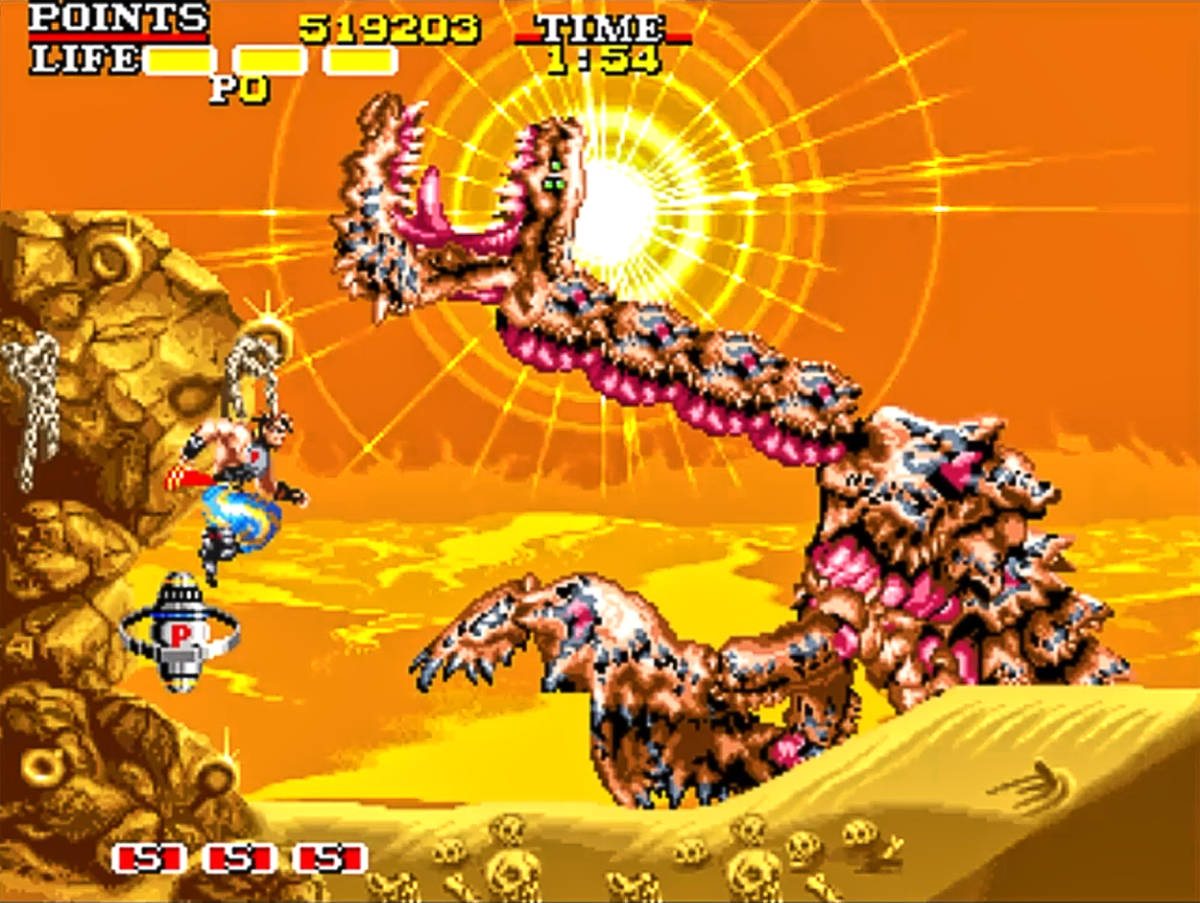Here in the year 2023, the idea of leaving your home and heading to a local arcade to play the latest and greatest gaming hits has become a completely foreign idea (outside of a select handful of specialty cabinets that offer experiences you can’t replicate at home). Back in 1996, however, that was still very much the norm. While the Sony PlayStation, Sega Saturn, and Nintendo 64 were bringing more power and capability to our living rooms, they still lagged behind the technology developed for game centers around the globe.
In part because of a lack of hardware capable enough to do justice to the arcade titles of that era, and in part due to simply how many games were released in arcades in those days—many of which companies saw as disposable media that would have a short lifespan—there are still an unbelievable number of games that have to this day never seen a home release.
For nearly 30 years, one of the pieces of lost media on that list has been Cannon Dancer, also known as Osman to those Westerners who actually know of its existence. A side-scrolling action title produced by Mitchell Corporation and released to arcades in 1996, Cannon Dancer could easily have been just another in a long line of arcade releases except for one important factor: It was the spiritual sequel to Capcom’s much-beloved Strider.

Cannon Dancer was one of those titles that I had completely given up on ever seeing a home release. Now, however, the game is finally getting a second chance at life by getting its first console port thanks to Mitchell and ININ Games. Set for release on Xbox Series X/S, PlayStation 5, Nintendo Switch, Xbox One, and PlayStation 4, the game is a 2D side-scrolling action platformer that puts players in the boots of a Cannon Dancer named Kirin. Living in a “dystopian late 21st century” landscape ruled by a single government, Kirin is called upon to take down Abdullah the Slaver, an “evil sorceress who wants to take control of the world.”
Where there have been numerous games inspired by the adventure of Strider Hiryu, what made this release so special was that its development staff featured a number of ex-Capcom members. That team included Kouichi Yotsui—aka Isuke, aka Teruaki, aka The Fourth Sally, aka The 6th Sally, from back when you couldn’t use your real names in the credits—who served as planner on both Strider and Cannon Dancer.
“In those days, a planning position meant a job where you did everything except programming and sound, such as producer, director, planner, designer, and small miscellaneous tasks,” Yotsui told EGM.
These days, with Strider still looked upon as one of the true classics from Capcom’s long history as a game developer, it makes sense that there would have been a lot of interest in a follow-up to the game, official or otherwise. However, in asking Yotsui about his feelings when looking back on working on Cannon Dancer, there seemed to be some mixed emotion.
“I’m the type of person who, after completing one game, wants to go explore another genre,” he explained. “At that time, ‘making a new game’ and ‘making a new genre of game’ were synonymous. However, for Strider, I wanted to [make a continuation] right away—because I felt it was not completed perfectly, and wanted to immediately apply the experience I gained, including my failures on it.”

And yet, as excited as he may have been going into the development of Cannon Dancer, Yotsui then told us that he was “a little depressed” about the production of the game after its completion.
“Although I was confident that [a game like Cannon Dancer was] my specialization, I did not feel that it was new to me,” he added.
There was another reason that Yotsui had reservations following the completion of the game, one that was less about his personal emotions as a game creator and more about the business side of the project. Cannon Dancer was hitting at a time when both its genre, and its entire method of development, were going out of fashion.
“In the heyday of fighting games, single-player action games were a commercial disadvantage,” said Yotsui. “And now when I look back on it, because of the rapid development of 3D games, it was [also] the tail end of the declining 2D pixel games, so it was a time between periods.”
Still, Yotsui’s feelings about the legacy of his work also have happier moments as well. As someone who will forever love the artistry and creativity of 2D games, Cannon Dancer was something I always wanted to play because it was such a love letter to action titles crafted from sprites and pixels. Even if it came to exist at such a time of uncertainty, due to advancing techniques and the possibilities that newer hardware brought for 2D projects, that may have been the only time such a game could have existed.
“Pixel art was at its peak, so it was a very precious time,” continued Yotsui. “I am proud to have left my mark with a high-end pixel art game from that era.”

While games like Strider and Cannon Dancer now rarely exist outside of the world of indie releases, the legacy of both games is still felt today. Yotsui’s work unquestionably helped pave the way for the “over-the-top action” genre of gaming, which now includes illustrious names such as God of War, Devil May Cry, and Bayonetta.
With Cannon Dancer readying itself to rejoin the modern era of gaming, I asked Yotsui if, all these years ago, he was trying to lay such a foundation in the medium—or if he was simply trying to create something that would be fun for arcade goers. His answer seemed to indicate that, at the time, he was thinking more about the present, and not any potential future.
“As much as possible, I wanted to load the game with one-time only mechanics and provide entertainment with surprises at every step,” he said. “Once a game system is established, it quickly becomes outdated, so we must always try to establish something new. Progress is normal, and if there are no surprises in a new release, the game loses its appeal.”
Even so, the man who helped birth a new style of action video game did end up having thoughts on what his work might mean for the future of the hobby, leaving us with one heck of a tease.
“The line of Strider Hiryu and Cannon Dancer Kirin has not been copied as much as I assumed, so I would like to create [such a game] on my own when I get the chance,” Yotsui added.
Cannon Dancer is set for release by ININ Games in Q1 2023 for PS5, Switch and PS4, with the Xbox Series X/S and Xbox One versions coming at a later date.

Mollie got her start in games media via the crazy world of gaming fanzines, and now works at EGM with the goal of covering all of the weird Japanese and niche releases that nobody else on staff cares about. She’s active in the gaming community on a personal level, and an outspoken voice on topics such as equality in gaming, consumer rights, and good UI. Check her out on Bluesky and Mastodon.